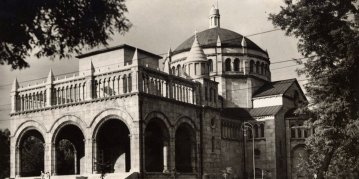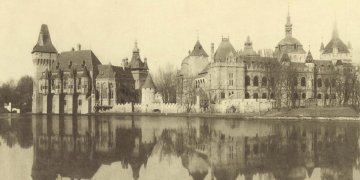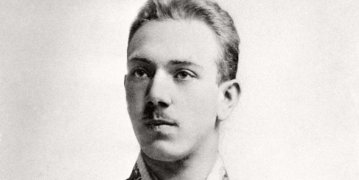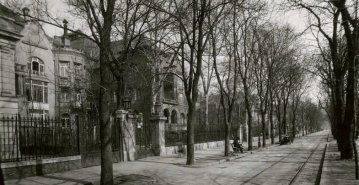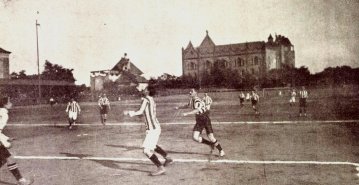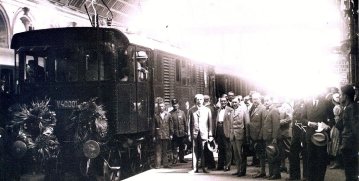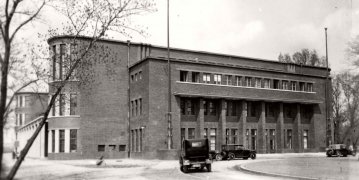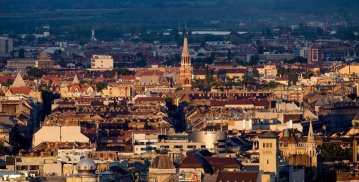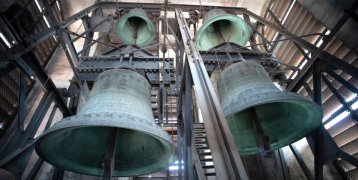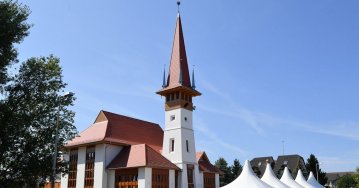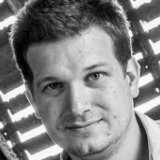
Millisits Máté
Cikkek
Built as a church of gratitude, demolished by Rákosi – the Regnum Marianum church was consecrated 90 years ago
June 22, 2021 at 9:30 AM
The replica of the Hungarian Holy Crown as a dome ornament was one of the unique features of the Regnum Marianum church, which was consecrated 90 years ago. Twenty years after its consecration on 14 June 1931, the sacral building was condemned to be demolished by the communist dictatorship, and its walls were blown up. There are few Hungarian churches of the 20th century in the Carpathian Basin, whose tragic fate could be associated with as much emotion as the history of the Regnum Marianum in Városliget.
The man who drilled the artesian wells of Budapest - Vilmos Zsigmondy was born 200 years ago
May 16, 2021 at 11:00 AM
Budapest owes a lot to Vilmos Zsigmondy: the enterprising mining engineer was one of the first international experts to successfully extract thermal resources in Hungary. He drilled the artesian well of Margaret Island. The drilling of one of the deepest wells in the world at the time, almost a kilometre away, in City Park, which made it possible to open the Széchenyi Baths, is also connected to his name.
Celebrating the millennial past of the Hungarian nation
May 1, 2021 at 4:00 PM
The central event of the millennium celebrations of 1896, held on the anniversary of the Hungarian Conquest of the Carpathian Basin, was the National Millennium Exhibition held in City Park. The exhibition, which was open for half a year, offered insight into the past of Hungarians and provided an opportunity to present the results achieved during the extraordinary economic development after the Austro-Hungarian Compromise.
Alfréd Hajós, Hungary's first Olympic champion, learned to swim on the Danube section in front of the Parliament
April 13, 2021 at 9:00 AM
As an outstanding talent, Alfréd Hajós created something unique in many sports and his chosen profession, architecture. He won the first Olympic champion title for Hungary when 125 years ago; in addition to the 100-meter sprint, he also won the 1,200-meter race in the sea-swimming competition held on 11 April 1896, near Athens. As an architect, he designed, among others, the National Sports Swimming Pool on Margit Island and the synod headquarters of the Reformed Church in Zugló.
Dutch memories fill Budapest
April 6, 2021 at 9:00 AM
Városliget Avenue is more than two hundred years old. The elegant road lined with villas and public buildings became the home of the elite of Pest in the last third of the 19th century. Several successful people had a house or holiday home built there, and many celebrities treated themselves in the sanatoriums located in the area. Városliget Alley has become a well-known name, yet, 100 years ago, in 1921, it was renamed Vilma Királynő Road after Queen Wilhelmina. The cause: a strange tale for which Budapest wanted to express its thanks to the Dutch.
Depictions of Christ portray the events of the Holy Week around Budapest
April 4, 2021 at 9:30 AM
Depictions of Jesus can be found in every district of Budapest of one walks with their eyes open. Most often, crosses erected near Catholic churches or by public roads are reminders of Christ’s crucifixion, but several Calvaries, statues, and building mosaics also depict Easter-related events: the story of the Passion and the resurrection of the Messiah. This virtual walk will present a selection of the most valuable works of art that give hope at Easter in 2021.
We need a team! - First professional football match in Hungary played 120 years ago
February 3, 2021 at 11:00 AM
Football spread from England to Hungary in the 1890s. The Hungarian Football Association was founded 120 years ago in 1901, and in the same year, the first Hungarian football championship began. Budapest Torna Club (BTC – 'Budapest Gymnastics Club') became the first winning team, with the Olympic champion architect, Alfréd Hajós in its ranks. The BTC remained the dominant team in the league for a few years and was soon succeeded by MTK and FTC.
The brilliant Kálmán Kandó – One of Hungary's greatest design engineers
January 16, 2021 at 12:00 PM
Kálmán Kandó, the enormously talented design engineer of Ganz Works, died ninety years ago. High-efficiency generators, transformers and electric motors were the results of his work. His efforts made electric power much more efficient.
Masterpiece of 20th-century Hungarian architecture – National Swimming Pool turns 90
December 8, 2020 at 11:00 AM
The first Hungarian Olympic Champion, Alfréd Hajós was also the man to design the National Swimming Pool, the temple of Hungarian water sports. Standing on Margit island the structure is not only central to sporting life in the country but remains a masterpiece of 20th-century Hungarian archictecture.
Zugló turns 85 – A district of palaces, villas and housing estates
October 9, 2020 at 3:00 PM
Established ninety years ago, Zugló became an independent district 85 years ago. The 14th District connects the city centre with the outer parts of the city, and its role is reflected in its architecture. Beautiful villas built by artists stand alongside stunning school buildings, monuments and the headquarters of various institutions in the styles of historicism and Art Nouveau and these were joined in the 1970s by housing estates.
Master bell founder Laszlo Szlezák born 150 years ago
October 6, 2020 at 3:00 PM
László Szlezák is possibly one of the best-known Hungarian bell-founders. He came to Budapest at the age of 14 and cast beautiful bells for churches throughout the city. Several of them can still be seen, for example in the Reformed Churches in Angyalföld and on Városligeti Avenue, on Ferenciek Square, in the Catholic Church on Haller Street, and the Kőbánya Church designed by Ödön Lechner. His largest and most famous work, the 7945 kg Saint Emeric bell cast for Saint Stephen's Basilica was destroyed in the Second World War.
A visit to Budapest’s newest Reformed Church
September 11, 2020 at 9:00 AM
The Reformed Church opened in Soroksár on 5 September is reminiscent of the turreted towers of Churches in Kalotaszeg (Țara Călatei, Romania). While the eighth Reformed Church to be completed in Budapest since the fall of communism in Hungary way bear marks of long-standing traditions on its exterior, its interior is of a more modern inclination.
The bells of Saint Stephen's Basilica – Hungarian and German masterpieces
August 21, 2020 at 9:00 AM
The historical value of the former and present bells in Saint Stephen's Basilica in Budapest is significant in terms of ecclesiastical, industrial and national history. Today’s large bell was donated by the German people in 1990 and was made by Perner in Passau. The bell was consecrated on 20 August 1990, thirty years ago. It is the largest bell in Hungary today.

